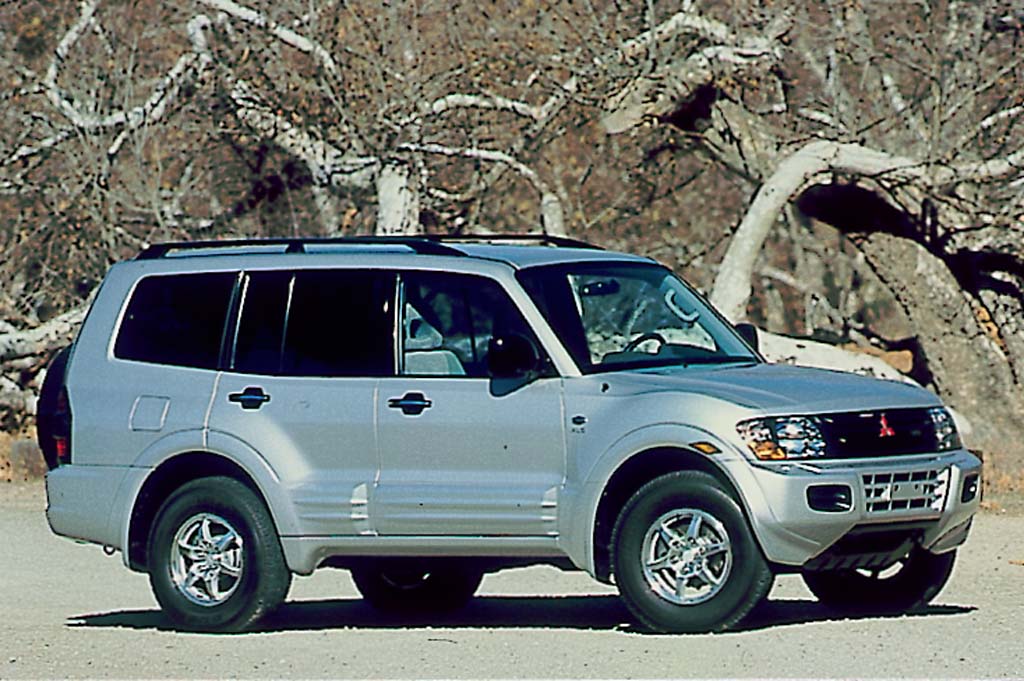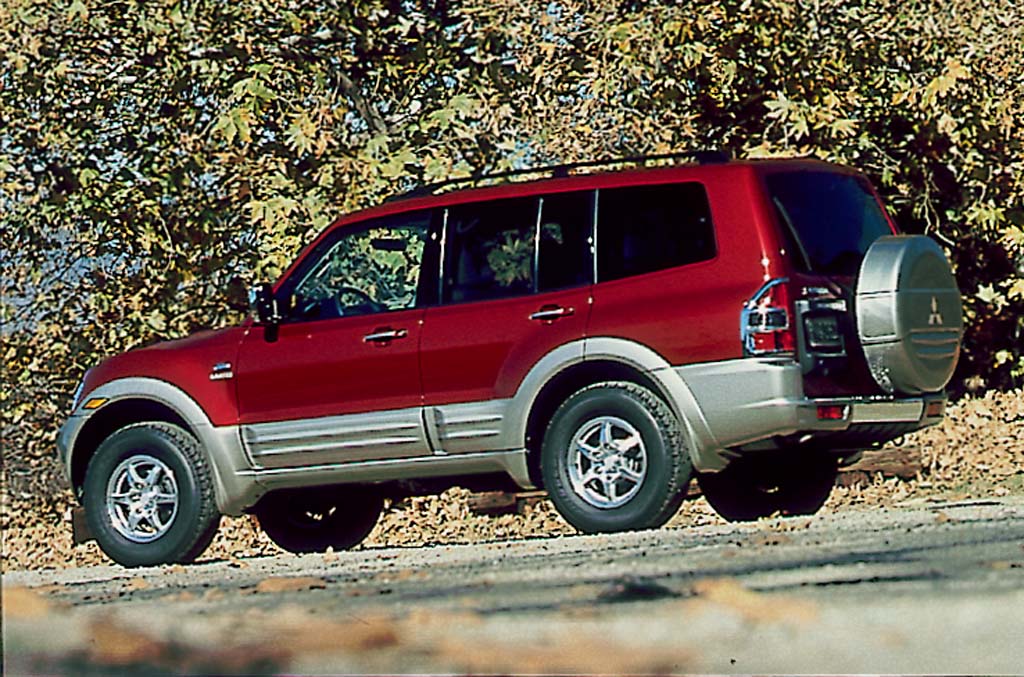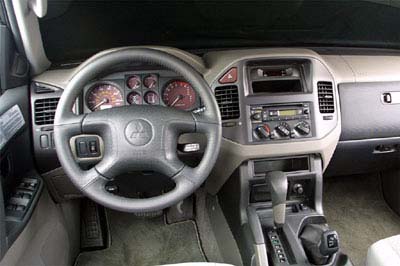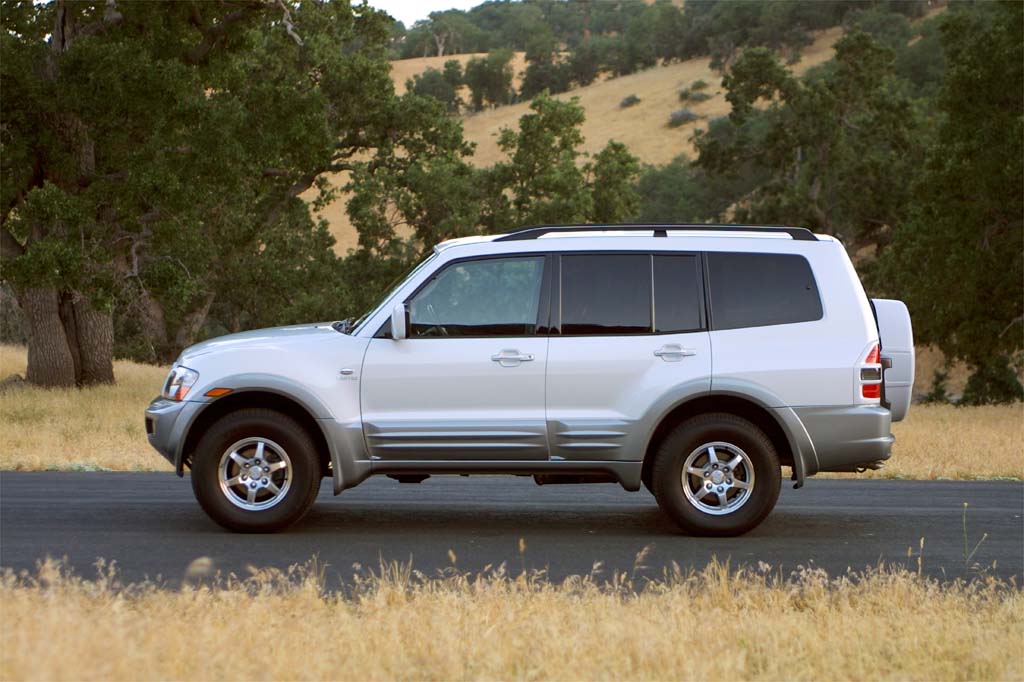| Large SUV; Built in Japan |
|
|
| Good condition price range: $4,200 – $12,000* |

2001 Mitsubishi Montero

2001 Mitsubishi Montero

2001 Mitsubishi Montero interior

2002 Mitsubishi Montero Limited

2002 Mitsubishi Montero Limited
| Pros: |
|
| Cons: |
|
Three rows of seats, solid construction, and reasonable fuel economy for a full-size SUV are among the Montero’s attractions. Unfortunately, those benefits are overshadowed by mediocre acceleration; too much body lean in turns; and a harsh, trucky ride.
Overview
Mitsubishi’s full-size sport utility vehicle got a major redesign for 2001. Longer, lower and wider than the 1992-2000 generation, the SUV gained a new independent rear suspension. Unlike most full-size SUVs, the Montero had unibody construction instead of a body-on-frame design. It also had a right-hinged cargo door instead of a liftgate or tailgate, but lacked the V8 engine that powered most big SUVs.
The previous version’s 3.5-liter V6 engine returned, but delivering slightly more torque. A four-speed automatic transmission and part-time four-wheel drive went into the base XLS model. Mitsubishi’s upscale Montero Limited featured a five-speed automatic with a separate manual-shifting gate, plus ActiveTrac four-wheel drive that could be used on dry pavement. Both models included low-range gearing and rode on 16-inch alloy wheels.
Antilock all-disc braking and front side airbags were standard. The Limited came with leather upholstery, heated power front seats, and a sunroof. Seven-passenger seating included a two-place third-row bench that could be removed or folded into the rear cargo floor. Competitors included the Chevrolet Tahoe/GMC Yukon, Ford Expedition, and Toyota Land Cruiser.
Yearly Updates
| 2002 Montero Available suedelike upholstery and revised exterior trim highlighted 2002 changes to the larger of Mitsubishi’s two SUVs. New XLS options included rear air conditioning, a power front passenger seat, and a Touring Package that added ultrasuede seat trim and a sunroof. The XLS gained chrome grille accents this year, while the Limited’s grille and trim were now color-keyed. |
| 2003 Montero Upgraded powertrains and an antiskid system were new for 2003, along with cosmetic revisions. The new, bigger 3.8-liter V6 engine produced 215 horsepower (up 15) and yielded 13 additional pounds-feet of torque. This year, the XLS adopted the Limited’s five-speed automatic transmission with its manual shift gate. The XLS also upgraded to the Limited’s ActiveTrac four-wheel-drive system, which can be used on dry pavement. Mitsubishi’s new antiskid system included traction control, and was included in both models. Body cladding was revised, and a new grille flaunted the Mitsubishi logo. The split second-row bench seat gained a center headrest and three-point seatbelt. Integrated running boards were lighted on the Limited, which added a tire-pressure monitor. Rear air conditioning was optional for both models. |
| 2004 Montero Front side airbags are optional instead of standard on the 2004 Montero. Mitsubishi did, however, add a tire-pressure monitor to the list of Montero’s standard equipment this year. |
| 2005 Montero Mitsubishi’s Montero exchanges standard 16-inch wheels for 17s in its only change for 2005. |
| 2006 Montero There were no significant changes for the 2006 Montero. |
